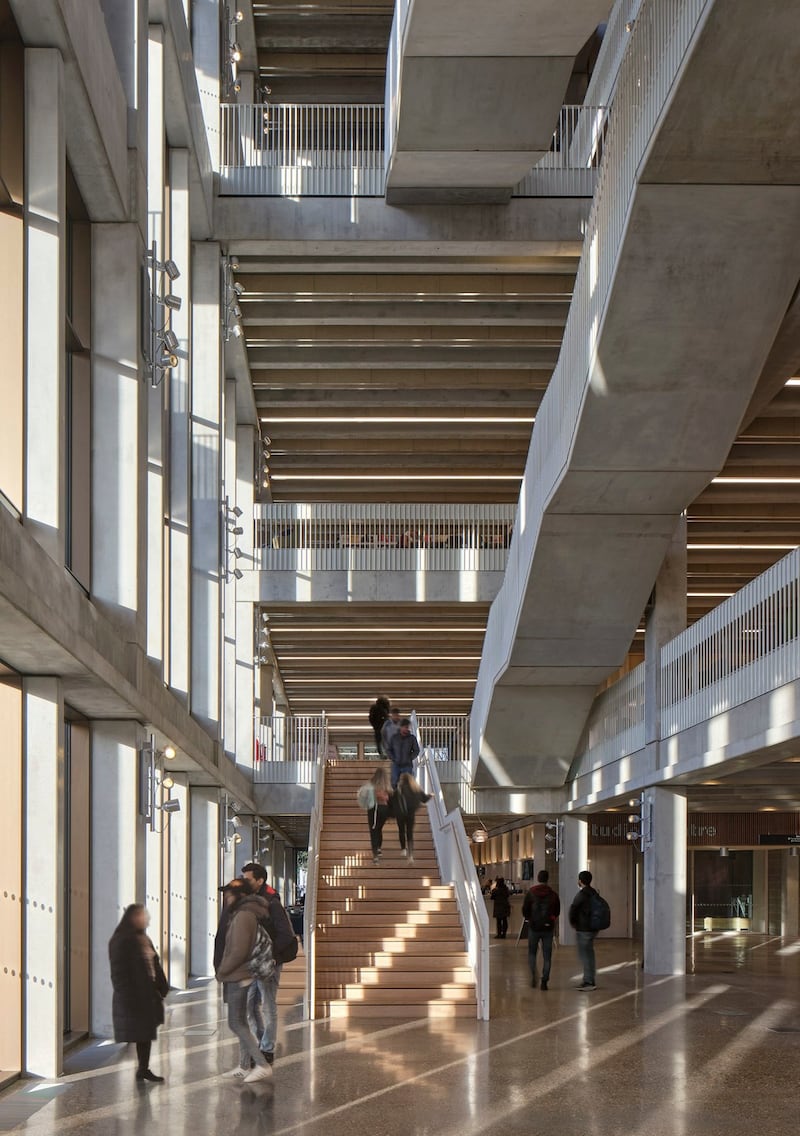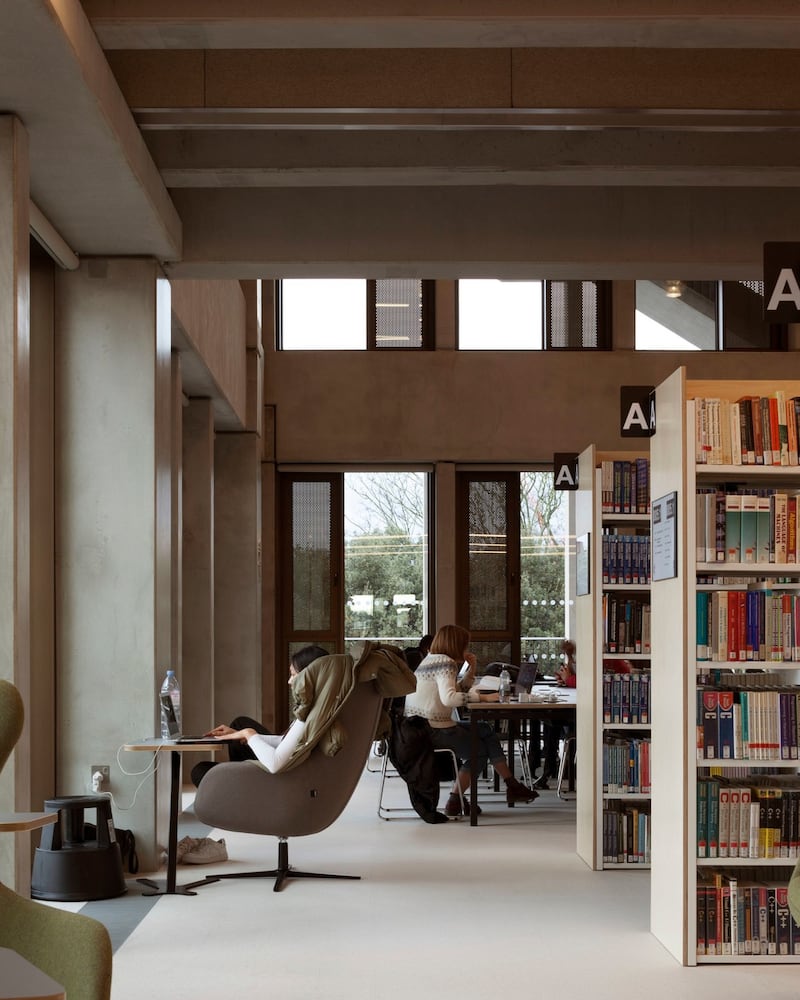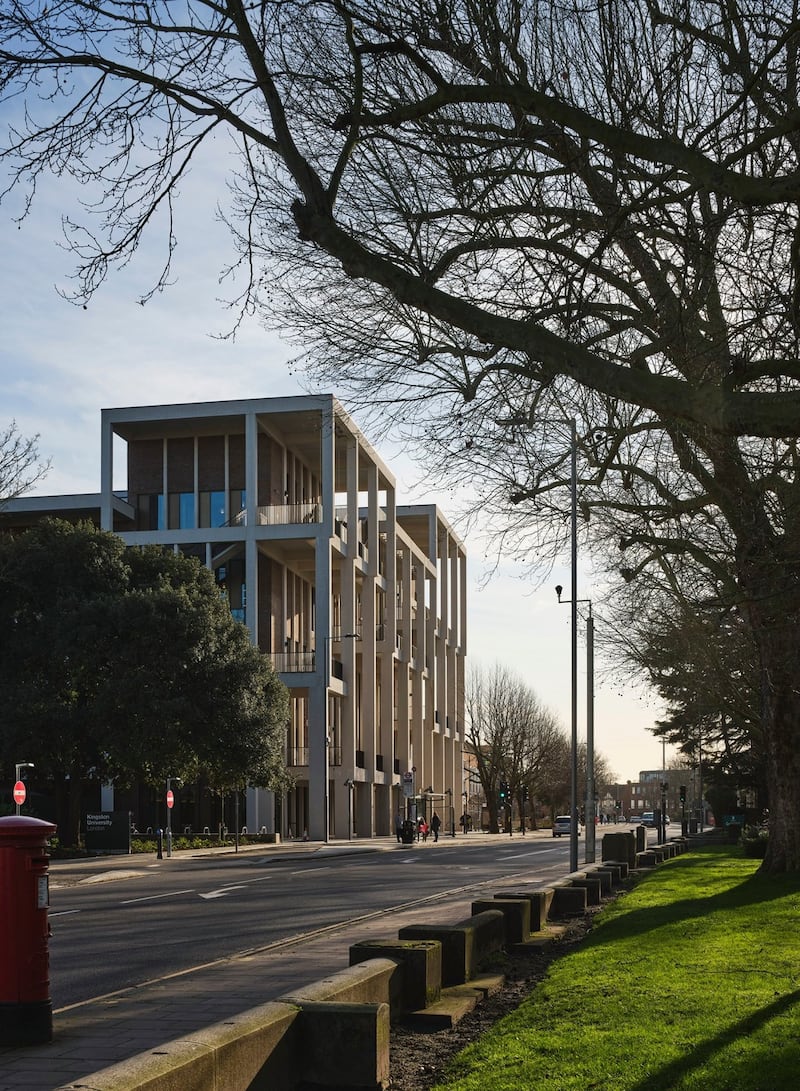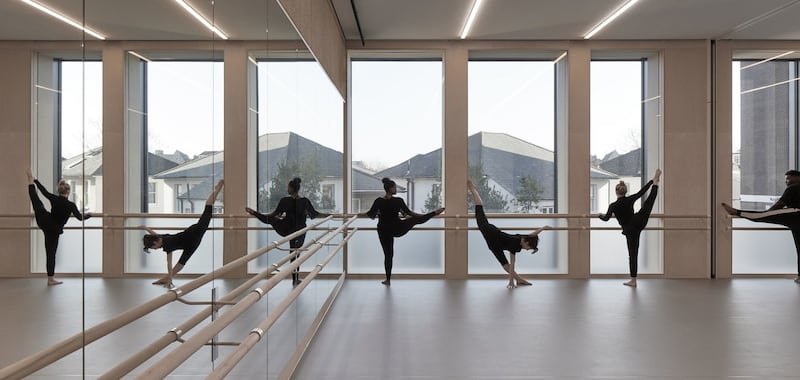Grafton Architects, the Dublin-based practice founded in 1978 by Yvonne Farrell and Shelley McNamara, has won the 2021 Riba Stirling Prize for the UK's best new building. The award, one of the highest honours in architecture, is for Kingston University's free-flowing Town House, a welcoming, transparent cathedral of social interaction perfect for students to spark off each other.
It continues a string of successes for the pair, who won the 2020 Pritzker Prize for their body of work and, for Solstice Arts Centre in Navan, the 2020 Riba Gold Medal. The Stirling, which like the Gold Medal is awarded by the Royal Institute of British Architects, now completes the hat-trick of architecture's most prestigious awards. As usual, the modest duo credit the power of the project to the client's radical vision.
It is a theatre for life – a warehouse of ideas. In this highly original work of architecture, quiet reading, loud performance, research and learning can delightfully coexist. That is no mean feat
The palatial €60 million complex, on the university’s campus in southwest London, is a six-storey hymn to one of the main reasons for going to university: meeting other people. It is a place of wide sociable staircases, broad public terraces and open-plan study areas that look across to dance studios and performance spaces.
In its free-flowing generosity, it is the exact opposite of the usual institutional world of siloed academic departments protected by swipecards. Instead, this is a welcoming, transparent place, where even the public is free to roam from top to bottom.
“It is a theatre for life – a warehouse of ideas,” said Norman Foster, speaking on behalf of the Stirling Prize jury. “In this highly original work of architecture, quiet reading, loud performance, research and learning can delightfully coexist. That is no mean feat.”


“It sounded completely crazy to put these different uses together in one building,” Farrell said on a tour of the Town House last year. “We loved the ambition to mix things that are usually incompatible. The building takes pleasure in these abrasions.”
Placing a noisy container of dynamic, thrusting bodies at the centre of a library might sound like madness, but so far it seems to be working. The quiet study areas are stacked up around the cubic performance space, with stepped seating on three sides, creating a multistorey theatre of views and connections. A broad staircase, wide enough to walk and chat, weaves its way up through a six-storey atrium, reaching a cafe at the summit with views across to Hampton Court Palace and the River Thames.
In the words of Kingston's vice-chancellor, Steven Spier, a trained architect, part of the aim was to see "a softening of the threshold between gown and town". The public welcome begins at street level, where a colonnade of white concrete marches for 200m along the pavement, creating a deep portico where tables and benches have made a popular meeting place – or simply somewhere to wait for the bus, sheltered from the rain.



The columns rise the full height of the building, supporting a dramatic cascade of balconies and terraces, creating further opportunities to hang out, meet or study alfresco. It is a bold beacon for Kingston, where many students are the first in their family to attend university, sending an important signal that “world-class architecture isn’t just the preserve of the Russell Group”, says Spier, referring to the UK’s older and more prestigious universities.
The project was a surprise winner. Most bets were on the Cambridge Central Mosque. Designed by Marks Barfield, architects of the London Eye, the €27 million building contains one of the most breathtaking interiors built in the UK in recent years, with timber “trees” that branch out to form an undulating geometric ceiling.
Perhaps it wasn’t considered sufficiently original: a mosque in Rome, designed by Paolo Portoghesi in the 1990s, has a similar ceiling structure, while there are also distinct echoes of the work of Japanese architect Shigeru Ban. Still, the entire history of architecture is one of copying and sampling, and the Cambridge mosque is something distinctly its own.
Other projects in the running included the gossamer-thin Tintagel footbridge, in Cornwall, the Windermere Jetty Museum, in the Lake District, key worker housing in Cambridge, and a striking “neo-neolithic” stone apartment building in east London, which the council tried to have demolished. It was an impressive range, but something was missing. At a time when the built environment is responsible for about 40 per cent of global carbon emissions, the importance of retrofitting existing structures is ever more crucial to averting the climate catastrophe.
As the gong goes to a handsome concerto of concrete (for which no embodied carbon assessment was conducted), we might ask when we will see a refurbishment rightfully recognised. – Guardian










